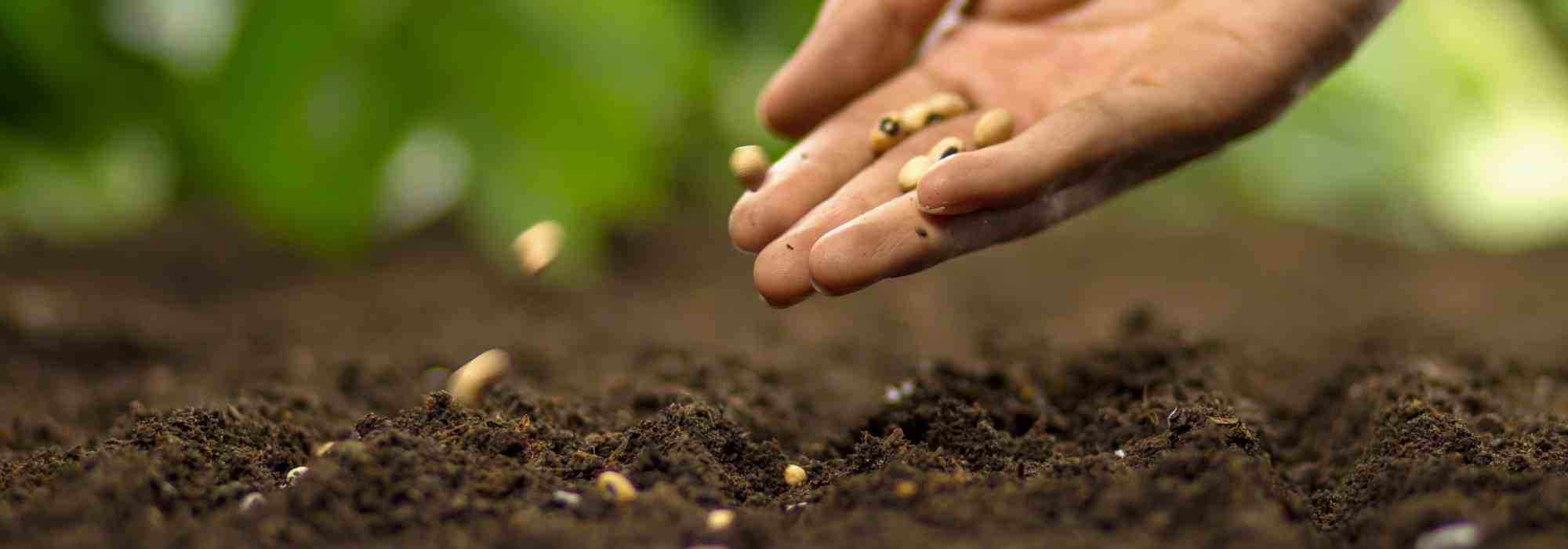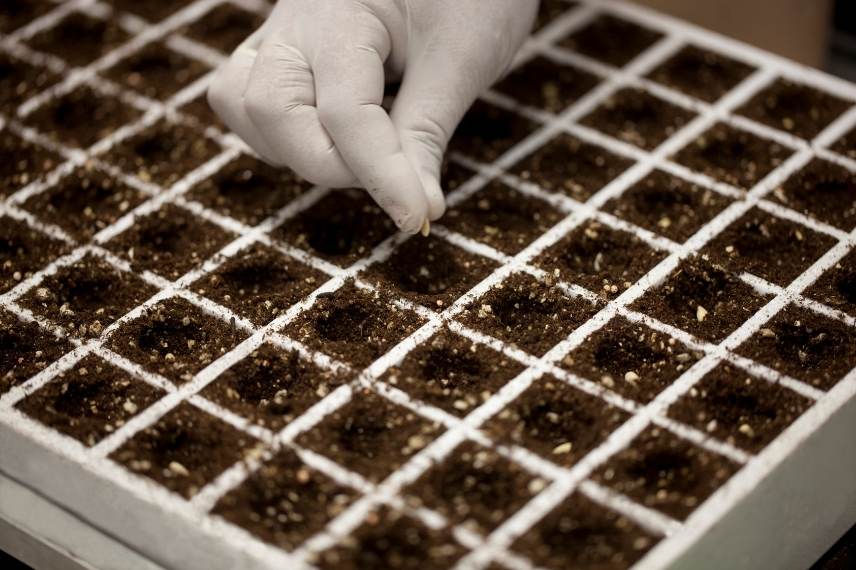
My Seeds Won't Germinate: Why? What Can I Do?
Main mistakes and solutions for indoor or outdoor sowing that fails to germinate
Contents
In the vegetable garden or indoors, you’ve carefully sown your seeds, watered them consistently, and waited for them to sprout… in vain. Not a single shoot emerges from the soil. But don’t worry, you’re not alone in facing this germination failure. In fact, it’s one of the most common frustrations among gardeners, whether beginners or experienced. However, behind every stubborn seed, there’s an explanation—from temperatures being too cold to overly damp soil. So, by adopting a few simple steps and following some practical advice, it’s easy to turn things around. In the garden as in life, every failure is a fertile lesson.
Discover the most common reasons behind failed sowings and, most importantly, practical solutions to grow vibrant young seedlings
Understanding the Basics of Germination
Before pointing out mistakes, perhaps it’s wise to revisit the basics. Germination is the magical moment when the seed, a plant embryo enclosed in an integument, dormant until then, awakens to begin its transformation into a plant. It’s a natural process, but an extremely sensitive one.
The four key elements of germination
For a seed to germinate, it needs a favourable environment.
-
Heat: most seeds require a temperature around 18 to 22°C to emerge from their dormancy. If the temperature is too cold, they remain dormant; if it’s too hot, they risk drying out. Each seed has specific requirements—some germinate at just 7 to 8°C, while others need significantly higher temperatures. I invite you to read my article Germination of Vegetable Plants, which outlines, among other things, the ideal germination temperatures for key vegetable plants.
-
Moisture: water intake rehydrates the seed, activates its enzymes, and triggers the biochemical reactions needed for growth. But be careful—don’t drown it! Waterlogged compost increases the risk of seed rot.
-
Oxygen: even underground, seeds breathe. If the growing medium is too compacted or saturated with water, gas exchange stops, and the seed may suffocate.
As for light, its role varies. Most seeds, like those of lettuce or basil, need light to germinate. Others, much rarer, prefer darkness. This is always indicated on seed packets.

To germinate, a seed needs heat, moisture, and oxygen
The importance of seed quality
If seeds are too old or poorly stored, they may lose their viability. A seed is a living thing! Its lifespan varies by species, and it dislikes moisture, extreme temperature fluctuations, or light during its “rest” in the packet.
If you have doubts about seeds found at the bottom of your box, try the paper towel test. Simply moisten the paper towels and place the seeds between them. Germination should occur within three days.
The most common germination mistakes
When a seed refuses to germinate, there is always a specific reason, whether it’s a mistake or unsuitable conditions. Let’s try to understand the main causes that prevent seeds from sprouting, and above all, the practical solutions to overcome the problem.
Unsuitable Temperature
Some seeds are sensitive to cold, others more tolerant, but below 15°C, many of them will simply… wait for better days. In short, all seeds are different, and knowing their germination temperature is important. It is often indicated on the packaging. For example, broad beans, peas, lettuce, or spinach germinate between 6 and 10°C, which is why they can be sown directly in the ground as early as March. On the other hand, tomato, melon, or squash seeds require much higher temperatures to germinate. Sowing indoors with warmth is essential. Sowing too early in the season or in a cool room can slow down (or halt) germination.
Our solutions:
- Use a heated mat or a heated mini greenhouse for indoor sowing of tender vegetable plants. They can also be placed in a room with a natural heat source, such as a conservatory.
- For outdoor sowing, wait until the soil has truly warmed up in spring, even if it means delaying sowing by a few days or weeks.
Incorrect Watering
To germinate, a seed needs water. But not too much! Indeed, in a waterlogged or completely sodden substrate, a seed will inevitably rot. Conversely, in completely dry compost, the seed will stop its germination process.
Our solutions:
- To keep the substrate just moist—neither waterlogged nor dry—it’s best to water your seedlings with a spray bottle or mister.
- To maintain a certain level of humidity, don’t hesitate to cover your seedlings with plastic film or a transparent lid. But remember to air them out a little each day.
Incorrect Sowing Depth
Whether in the ground or in trays, a seed should be buried at a depth proportional to its size. The smaller the seed, the closer to the surface it should be sown. Larger seeds, like those of peas or broad beans, should be buried a little deeper, partly to escape the beaks of pigeons, which love them.
Our solutions:
- Remember this rule: seeds should be buried at 2 to 3 times their diameter.
- Thus, radish, lettuce, carrot, lamb’s lettuce, leek, tomato seeds… should be buried less than 1 cm below the surface and lightly pressed down. Broad bean, pea, and bean seeds should be buried 3 cm deep.
- Try not to sow too densely. Sparse sowing makes it easier for seeds to sprout.

Seeds should be sown at a depth of two to three times their diameter
Insufficient Light
Light is also important, as most plants need it to germinate. Very few seeds can germinate in darkness. This light even penetrates through the substrate. While outdoor seeds receive enough light, it’s often more problematic indoors, especially in spring when sowing tender seeds.
Our solutions:
- Place your trays, seedling containers, or buckets near a light source, such as a south- or west-facing window, or ideally in a conservatory.
- Be mindful of direct sunlight, which can scorch young shoots as soon as they emerge.
Unsuitable Substrate
Sowing in heavy, sticky, overly compacted, or coarse garden soil, or in overly rich compost, can hinder germination. Simply because your delicate little seed won’t have enough strength to push through the soil components. Young roots need light, aerated soil without excess nutrients at first.
Our solutions:
- For indoor sowing, use a special sowing or potting compost, made of compost, sand, and vermiculite.
- For outdoor sowing, thoroughly work and loosen the soil, then rake to level and lighten it. Take the opportunity to carefully remove stones and weeds that compete with the seeds.
- If, after this preparation, your soil is still very heavy, sieve compost over your sown seeds.
Old or Poorly Stored Seeds
Seeds don’t last forever. Manufacturers even indicate a use-by date on packets, which should be respected. Indeed, the older the seeds, the lower their germination rate. And if they’ve been stored in a damp or warm place, they may have lost all vigour and no longer be viable.
Some seeds can see their germination capacity improved by a simple overnight soak in lukewarm water.
Our solutions:
- Always check the expiry date of seeds before sowing.
- Store seeds in a cool, dry, dark place, without sudden temperature changes.
- Keep your seeds in airtight containers or jars.
A little anecdote to finish: this year, when I wanted to sow my broad bean seeds, I was surprised to find them infested with bean weevils. I had to throw away all my seeds. The fault was mine: I had forgotten to freeze my seeds for 24 hours to kill the larvae. Moreover, I hadn’t stored them in airtight containers.
- Subscribe!
- Contents
































Comments